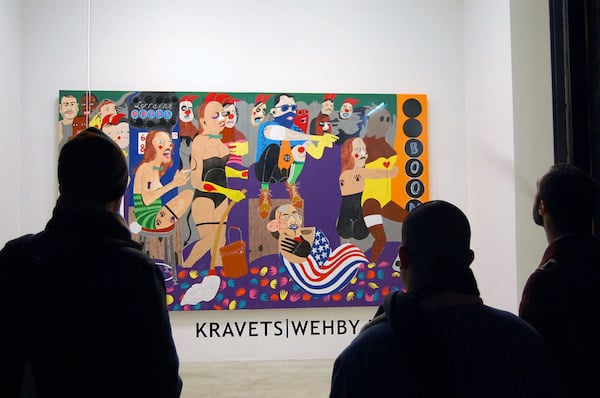
At a recent Sotheby’s auction, an untitled painting by Jean-Michel Basquiat set a record high, going for $110.5 million. A New York Times piece on the sale included information on the buyer, and addressed an inevitable part of the narrative: How did the buyer decide on this particular piece? What did he see in it? How many people were involved in making the final decision? I try to imagine the discussion that goes on between buyer and advisor—and whoever else has a say in the process. I presume a careful algorithm measuring growth potential, media coverage, and (because I’m not a complete cynic) the buyer’s love of the piece.
We know what’s involved in pricing high-end art. We’re savvy enough to know that there are forces at work that create the market for specific artists—factors that make, for example, Andy Warhol’s estate a worthy financial investment. And even with that knowledge, the public doesn’t dismiss the value of visual art, or think of it as the sole purview of those who can afford blue-chip artwork. Creativity is an undisputed cultural value.
But while art can be a powerful communicator that holds up a mirror to society and resonates in a thousand other lofty, philosophical ways, the art market reflects something more realistic. People have powerful reactions to certain pieces and buy based on those feelings and based on what they enjoy viewing, but they’re also swayed by what they hear others are buying and what’s affordable to them.
So why aren’t there more guidelines for pricing art at lower and middle levels of the market?
Measuring Art’s Impact on Local Economies
The Basquiat sale and other recent auctions of its kind seem removed and economically insular—the players are few—but public-policy research has been studying the quantification of art for years. The purpose of these studies is to further economic growth (New Engines of Growth) because both state and federal governments recognize art as a powerful influencer of the economy.
The research has explored the economic boosts that art can inject at the local level. Those boosts come in numerous forms, including the rent that artists pay for studio space, the purchases made at galleries, and the general tourism income that flows into towns and regions made famous by a particular artist. (I can’t be the only person drawn to rural Virginia because of Sally Mann’s photos and writing.)
Art invigorates weak economic areas, and studies have explored the revitalization of both rural and urban places (From Rust Belt to Artist Belt). Maine and Oregon offer two examples. The Maine Arts Commission developed a program to measure its creative economy, and used the information “to formulate local economic development strategies and tourism initiatives, as well as coordinate local and state economic, workforce, and cultural development efforts.” Oregon’s Creative Vitality Index measures arts-related economic activity, stating that arts organizations are essential to the “continuing health and vitality of the greater economy.”
Although these reports are used for arts advocacy, they also provide a wealth of information for artists to mine, including answers to questions such as: Whose voices currently matter in the market? What might be deemed museum-worthy in 50 years? What will the public buy? By being aware of the research on a particular community and region, an artist can suss out where support might become available or what angle to take when presenting one’s work to funders.
Where Are the Research Gaps?
Knowing which factors influence public opinion is useful information but, unfortunately, that is where these research efforts have ended. The studies prove that art is a worthy investment, and they parse the many ways that art influences the economy, but what else could be done to promote the financial success of working artists? What other data could the research provide?
There’s been negligible effort made to collect and break down data that’s truly useful to working artists. The studies don’t explore how to quantify art or offer any guidelines to buyers or emerging artists. What does it take to get buyers to purchase art on the lower end of the market? What are the income differences between sculptors, painters, and ceramists? How many living artists in a particular state are represented by galleries or have had their work displayed in museums? What communities have produced successful artists and why?
Going Beyond the 1%
The hesitation to quantify an individual’s creativity is understandable. But without a deeper analysis of the economics of creativity, pricing is left up to galleries and agents, which some artists have trouble acquiring.
The visual-arts economy exists on a long spectrum, with blue-chip art on one end and art fairs on the other. Extensive time and money have been put into researching the economic impact of art, and while artists can harness this data to help them move toward the higher end of the spectrum, much more could be done—to the benefit of artists and society alike. The research has already proven that art has economic value. Now we need go further and push for data that artists can employ at all stages of their careers.







